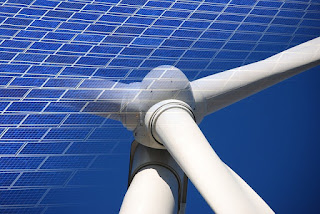
What is LEED Certification and Why It Matters
Have you ever wondered what makes a building eco-friendly or how you can tell if it's really as green as it claims to be? That's where LEED certification comes into play. LEED stands for Leadership in Energy and Environmental Design, and it's a globally recognized symbol of sustainability. Let's dive into what LEED certification is and why it’s important.
LEED is a system developed by the U.S. Green Building Council (USGBC) to evaluate the environmental performance of a building. It awards points for various green building practices, such as energy efficiency, water conservation, and sustainable materials. Buildings are then given a rating of Certified, Silver, Gold, or Platinum based on the number of points they earn.
So, how does LEED certification work? It assesses different aspects of a building’s design and operation. This includes energy use, indoor environmental quality, and the use of sustainable resources. For instance, a building might earn points for using energy-efficient lighting or for having a green roof that helps reduce urban heat.
Real-Life Examples:
1. Apple’s Campus 2 in Cupertino: Known as “The Spaceship,” this campus is a Gold LEED-certified building. Its design features include a natural ventilation system and extensive use of recycled materials, which contribute to its energy efficiency and low carbon footprint.
2. The Edge in Amsterdam: This office building holds the record for being the greenest building in the world. It’s Gold LEED-certified and boasts features like solar panels, rainwater harvesting, and an innovative energy-efficient lighting system.
In our self-sustainable city project, LEED certification is crucial. We aim to incorporate green building practices that align with LEED standards to ensure our homes are not only sustainable but also provide a healthier living environment. For example, our houses will use energy-efficient systems and sustainable materials, reducing their impact on the environment and enhancing their overall efficiency.
We believe that achieving LEED certification not only boosts the value of our properties but also supports our mission to create a more sustainable future. It’s a testament to our commitment to environmental stewardship and high-quality living.
What do you think about LEED certification? Have you seen any other buildings that impressed you with their green features? Share your thoughts or questions in the comments below!
![Self-Sustainable City - Ramakrishna Surathu [Official Website]](https://blogger.googleusercontent.com/img/a/AVvXsEivh2bAyNCG-DxYf4p_lHLcFQx1i8MvbBv91UgzKqAFrNMhT8xW-fwxgNJTdtojgb9aYXiG9EdNYLo8tNmtaakyq-zmnaCeeUGMdpvJ8iOaVzd2tSKEC2UrUXzFJa952LPF-OngfPenpbFOj7b8AcbYtPGSng6xbGr-_NwEIRpXZg_QdKLGRMGeg5pWmtaQ=s1280)
No comments:
Post a Comment